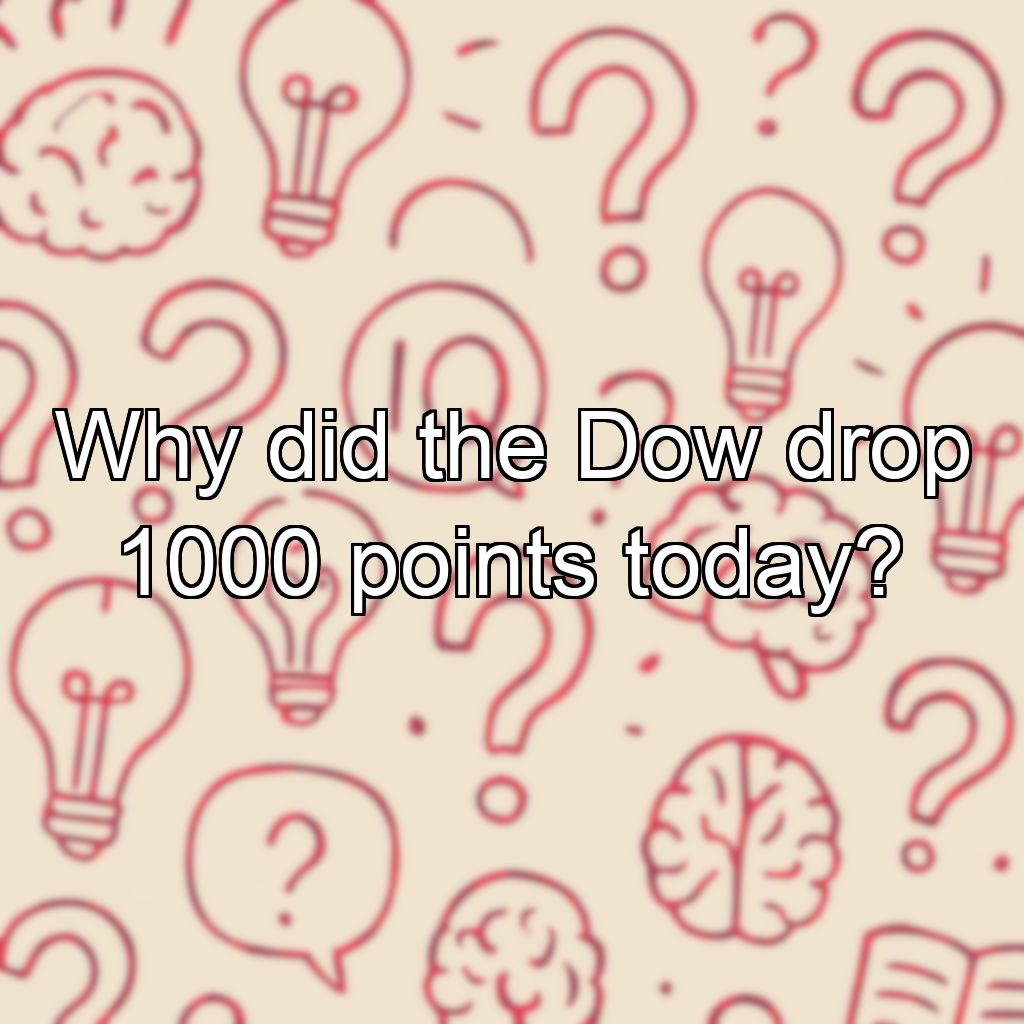Why did the Dow drop 1000 points today?

Reasons Behind the Dow's 1000-Point Drop
Market Volatility and Investor Sentiment
The significant decline in the Dow Jones Industrial Average by 1000 points can be attributed to a combination of factors that influenced investor confidence and market stability.
Economic Data and Corporate Earnings
Disappointing economic reports, such as lower-than-expected GDP growth, rising inflation rates, or weak employment numbers, can lead investors to predict slower economic growth, prompting sell-offs.
Geopolitical Tensions and Global Events
Escalating geopolitical conflicts, trade tensions, or international crises often cause uncertainty in financial markets, resulting in sharp declines as investors seek safer assets.
Interest Rate Changes and Monetary Policy
Announcements or speculations about interest rate hikes by the Federal Reserve can negatively impact stock prices, especially if investors interpret these moves as signs of tightening monetary policy.
Technical Factors and Market Corrections
Technical trading patterns, such as breaking key support levels, can trigger automated selling and contribute to sudden drops, often leading to market corrections after prolonged gains.
Summary
The Dow's drop was likely caused by a combination of economic concerns, geopolitical issues, monetary policy expectations, and technical trading factors, leading to a rapid decline in investor confidence and market value.